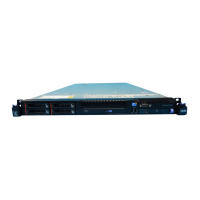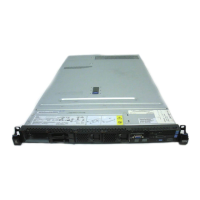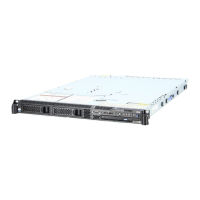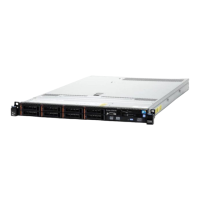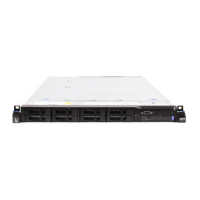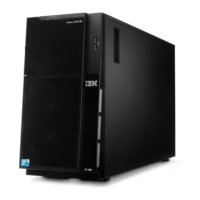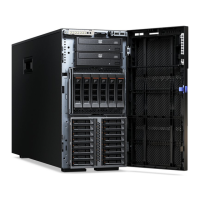Memory problems
v Follow the suggested actions in the order in which they are listed in the Action column until the problem
is solved.
v See Chapter 3, “Parts listing, Type 7978 and 1913 server,” on page 29 to determine which components are
customer replaceable units (CRU) and which components are field replaceable units (FRU).
v If an action step is preceded by “(Trained service technician only),” that step must be performed only by a
trained service technician.
Symptom Action
The amount of system memory
that is displayed is less than the
amount of installed physical
memory.
1. Make sure that:
v No light path diagnostics LEDs are lit on the operator information panel.
v Memory mirroring or sparing does not account for the discrepancy.
v The DIMMs are seated correctly.
v You have installed the correct type of memory. See “Installing a memory
module” on page 54.
v If you changed the memory, you updated the memory configuration in the
Configuration/Setup Utility program.
v All banks of memory are enabled. The server might have automatically
disabled a memory bank when it detected a problem, or a memory bank
might have been manually disabled.
2. Check the POST error log for error message 289:
v If a DIMM was disabled by a system-management interrupt (SMI), replace
the DIMM.
v If a DIMM was disabled by the user or by POST, run the Configuration/Setup
Utility program and enable the DIMM.
3. Run memory diagnostics (see “Running the diagnostic programs” on page 142).
4. Add one pair of DIMMs at a time, making sure that the DIMMs in each pair are
matching. Install the DIMMs in the sequence described in “Installing a memory
module” on page 54.
5. Reseat the DIMMs. See “Installing a memory module” on page 54.
6. Replace the following components one at a time, in the order shown, restarting
the server each time:
a. DIMMs
b. (Trained service technician only) System board
Multiple rows of DIMMs in a
branch are identified as failing.
1. Reseat the DIMMs; then, restart the server.
2. Remove the lowest-numbered DIMM pair of those that are identified and
replace it with an identical pair of known good DIMMs; then, restart the server.
Repeat as necessary. If the failures continue after all identified pairs are
replaced, go to step 4.
3. Return the removed DIMMs, one pair at a time, to their original connectors,
restarting the server after each pair, until a pair fails. Replace each DIMM in the
failed pair with an identical known good DIMM, restarting the server after each
DIMM. Replace the failed DIMM. Repeat step 3 until you have tested all
removed DIMMs.
4. Replace the lowest-numbered DIMM pair of those identified; then, restart the
server. Repeat as necessary.
5. (Trained service technician only) Replace the system board.
Chapter 5. Diagnostics 127
